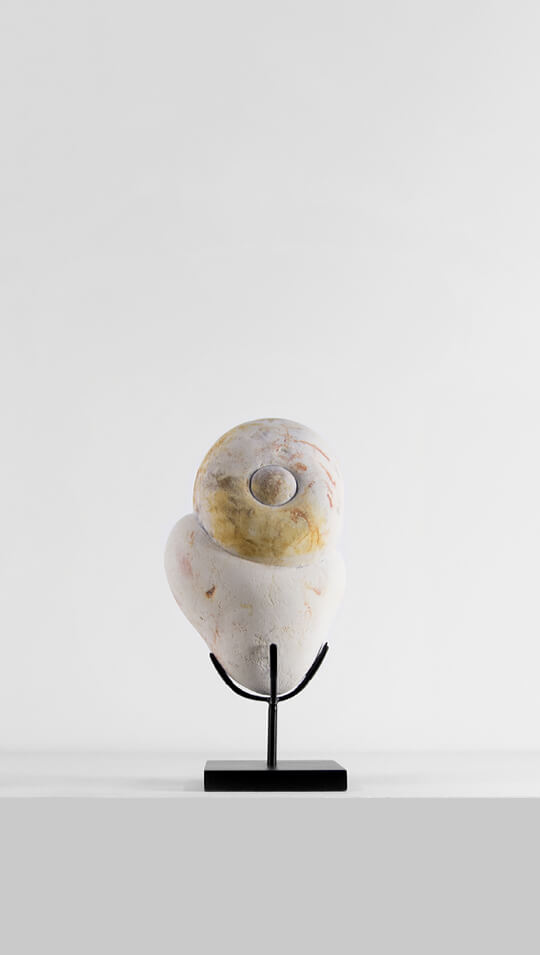The unique sculptural form of Gogottes discovered in the Phosphate deposits of Benguerir, Oulad Abdoun Basin, near Casablanca, Morocco, NWA. The phosphate deposits date from the Cretaceous 60 million years old to the Oligocene Period 30 million years ago approximately. The white anomalies or concretions are discovered among Cretaceous fossil beds in this region and other fossils beds part of the same series near Goulmina in South Eastern Morocco.
The limestone curiosities are extremely tough and often result in the loss of a good fossil ammonite for instance. Trying to remove the concretions attached to any fossil can prove nearly impossible without causing much damage to its host.
However, as an object of nature and natural sculpture, the Gogottes have been much admired and collected through history. In the Far East where nature has a parallel virtue to magnificently created artworks sculpture and petrified wood sit comfortably with Rock Gardens and Bonsai tree cultivation.
The purest forms of Gogotte concretions can attract high value, and even smaller examples are elevated. Gogotte's of Casablanca exhibit an attractive and subdued rusty red pigmentation, this denotes a heavy concentration of iron in the mineral depositions and gives the NWA Gogottes a unique signature.
The form was mainly in this region of quartz crystals and calcium carbonate. Where superheated water naturally creates Gogottes under enormous pressure when extruded through crevices of extremely fine white silicate. The water became heavily saturated with calcium carbonate (Limestone), and so the swirls of the liquidus mass have over a long time become solid stone, which emulates the movement under the earth where pools of the mineral-saturated concretions were captured in the gradual concreting limestone, forming the beautiful and natural freeform sculptures.
Sir David Attenborough recently unveiled an enormous specimen at the British Museum, London. Art stone culture; Ancient Chinese texts refer to nature concerning a life force or Qi, a belief that absorbed into the formal philosophies of Daoism and Confucianism and which permeates the Chinese intellectual psyche of today. In the Song Dynasty (960-1279), the elite and scholarly classes brought natural forms, such as rocks, into a domestic context. A golden period for the arts where nature-inspired philosophy, poetry, calligraphy and painting. Rocks and roots continue to be collected today, the most prized examples having been passed down from collector to collector over many generations.
The sculptor Henry Moore owned an example, and the French Surrealists were known to have been inspired by them. Gogottes are also on exhibit at The Smithsonian Institute in Washington, beside The Hope Diamond! They have recently termed a contemporary literati curiosity.
Notably recognised gogottes are found in Fontainebleau, France, favoured by Louis XIV of France (1638 -1715) who used them to decorate the gardens at Versailles, most notably l’Encelade built-in 1675-8, Les Trois Fontaines in 1677-9 and La Salle de Bal in 1680-5.
And other places where they are venerated such as The Garden Gogottes located in the district of Villaroy Guyancourt in the Yvelines. Which is a work conceived in 1996 by the urban planner Jean-Noël Capart with the landscape architect Jacques Simon. The sculptor Philolaos Tloupas has inserted his Gogottes into a garden.

